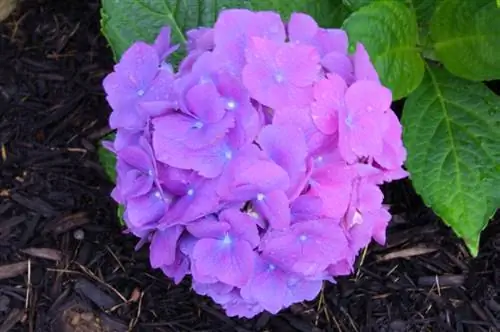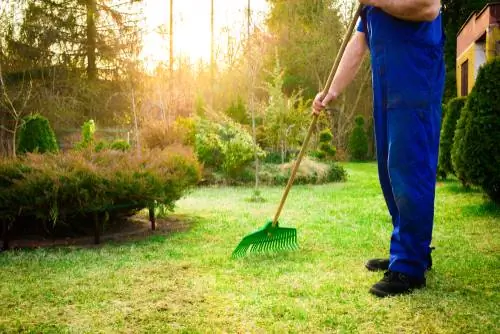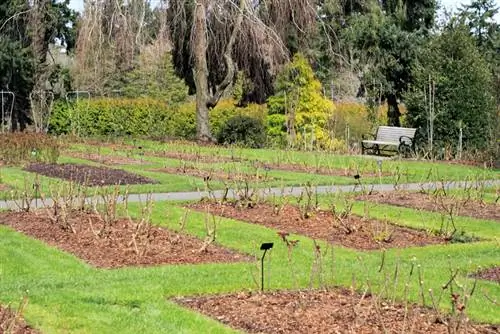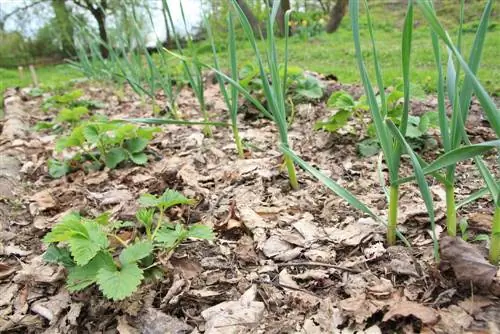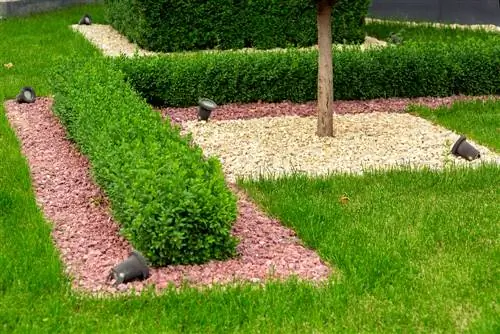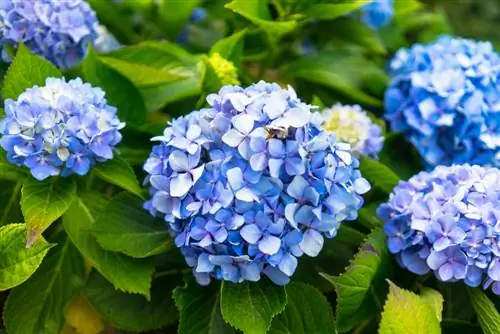- Author admin [email protected].
- Public 2023-12-16 16:46.
- Last modified 2025-01-23 11:20.
The hydrangea prefers acidic soils, which is why it is often recommended to regularly incorporate leaf or coniferous compost into the soil. You can also mulch the soil around the hydrangea to keep the soil free of weeds. Below we will explain to you what other advantages regular mulching has and why only high-quality bark mulch should be used.
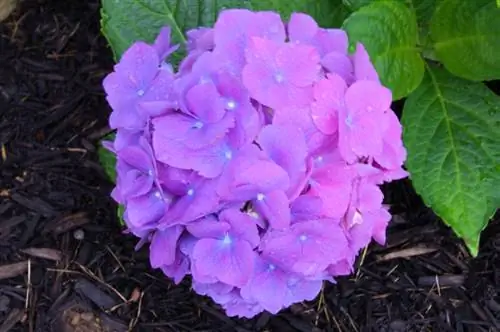
How should you properly mulch hydrangeas?
Mulching hydrangeas contributes to improved soil quality and a stable moisture supply. Ideal, environmentally friendly materials for mulching are straw, leaves, compost, wood chips, grass clippings, shredded plant materials or cocoa shells. The mulch layer should be about 5-10 centimeters thick.
What is bark mulch?
Bark mulch is shredded tree bark to which no other additives are added. However, there is no uniform legal regulation, so bark mulch does not have to consist of 100 percent bark. Particularly very inexpensive bark mulch can contain by-products such as twigs, chips and plant waste. Since, among other things, cadmium (€35.00 at Amazon) is released into the substrate when the material decomposes, experts now advise against using uncertified bark mulch.
Mulching in an environmentally friendly way
As an alternative, these materials are available for mulching the hydrangea:
- Straw, leaves and compost as a mixture
- Wood chips
- Leaves
- Grass clippings
- crushed plant material such as twigs
- Cocoa shells
Many of these products are used for maintenance work in your own garden and are therefore available inexpensively.
How to mulch?
The higher the layer thickness, the longer the positive properties of mulching last. The minimum is a layer of five centimeters. We recommend not skimping on the mulching material and spreading a layer about ten centimeters thick evenly around the hydrangeas.
The effect of mulching
If the layer is thick enough, the soil mulch keeps the soil around the hydrangeas free of weeds. This effect is due to the substances released into the substrate and the reduced air supply.
At the same time, the soil mulch offers protection against evaporation and moisture is better retained in the subsoil. The hydrangea, which is very sensitive to drought, thrives particularly well. In winter, the ground mulch acts like a warming blanket and protects the hydrangea from frost.
Microorganisms and insects settle under the mulch cover and ensure a natural improvement in soil quality.
Tips & Tricks
Compost contains a lot of nutrients. It is therefore not suitable for mulching hydrangeas. Always mix compost with other mulching materials and only apply this valuable fertilizer in doses.

